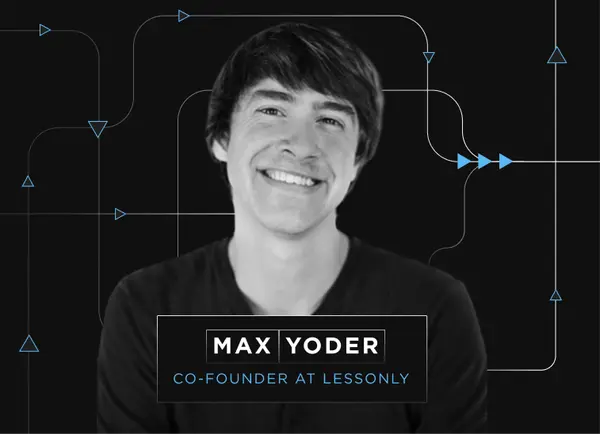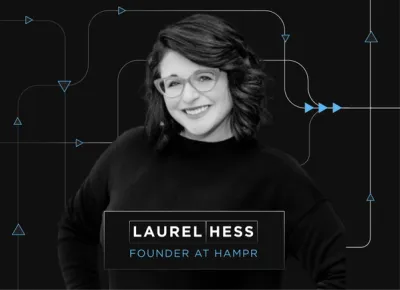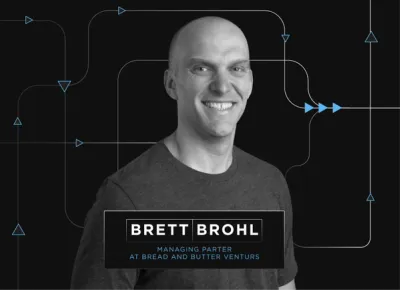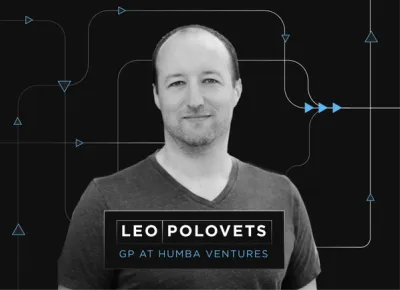
25 Limited Partners Backing Venture Capital Funds + What They Look For

Where Do LPs Get The Capital They Deploy?
The National Venture Capital Association states that limited partners (LPs) are typically institutions or high-net-worth individuals, family offices, and sovereign wealth funds that have a substantial amount of liquid capital to invest. Some examples could include pension funds, endowments, foundations, and insurance companies.
In many cases, these investors allocate a portion of their capital to alternative asset classes, such as private equity or venture capital, as part of a broader investment strategy. The LPs then pool these funds together and invest them in venture capital firms as limited partners. It carries a higher risk compared to traditional assets such as stocks and bonds but also offers the potential for higher returns. Institutional LPs generally invest between $5 million to $50 million in a fund.
The venture capital firm, in turn, uses the capital to invest in early-stage or high-growth companies with the potential for significant returns. If the investments are successful, the venture capital firm will generate returns for its limited partners, who may then reinvest those returns into other funds or asset classes, or distribute them to their own investors or stakeholders.

How To Find LPs
Finding limited partners (LPs) for a venture capital fund can be a challenging and time-consuming process. Here are some general steps that can help:
- Develop a target investor profile: Before starting your search for LPs, you need to understand the type of investors who are likely to be interested in your fund. Consider factors such as their investment preferences, geographic location, size of investment, and sector focus.
- Network: Networking is a crucial part of the fundraising process. Attend industry conferences, join venture capital associations and groups, and seek out opportunities to meet potential LPs in person or online.
- Leverage existing relationships: Reach out to your existing network of investors, entrepreneurs, and industry contacts to see if they can introduce you to potential LPs.
- Work with placement agents: Placement agents are firms that specialize in helping venture capital firms raise capital from institutional investors. They can provide access to a broader range of LPs and can help you navigate the fundraising process.
- Use online databases: As mentioned earlier, there are online databases like PitchBook, Preqin, and NVCA that offer information on LPs investing in venture capital firms. These databases can help you identify potential LPs and get a better understanding of their investment preferences and history.
- Hire a professional investor relations team: Larger venture capital firms often have dedicated teams focused on investor relations. If you have the resources, hiring a professional investor relations team can help you navigate the fundraising process and build relationships with potential LPs.
LPs and VCs typically connect through one of two channels, either directly, due to prior collaboration at another fund or in an adjacent area of finance, or indirectly, via a warm introduction from a trusted source.
When VCs set out to establish a new fund, they often seek out an initial, strong LP known as an anchor. The anchor commits to the fund and helps the VC identify other potential investors. Depending on the network of the VC and their anchor, the fund’s investors can include family offices, high net-worth individuals, or even large institutional funds such as a fund of funds, CALPERS, or university endowments.
While VCs tend to be selective in choosing who they allow to invest in their fund, the process of selecting an anchor by well-connected or respected individuals is even more deliberate and cautious. Securing the right anchor for a fund is a crucial task for a venture firm to successfully raise their fund and set the stage for subsequent rounds in the future.
What Kind of Limited Partner To Target For Your First Fund
If you are building your first fund, you should look for LPs who are interested in investing in early-stage venture capital funds and have a history of investing in first-time funds. These LPs are typically high-net-worth individuals or family offices who are willing to take on higher risks for potentially higher returns.
Additionally, you may want to consider looking for LPs who have experience in the industry or sector you are targeting with your fund. They can provide valuable insights and connections that can help you identify and evaluate investment opportunities.
It’s also important to consider the size of the LPs you are targeting. While institutional investors can provide significant capital, they may also have more stringent investment criteria and require a proven track record. On the other hand, smaller family offices and high-net-worth individuals may be more flexible and willing to take a chance on a first-time fund.
Related Resource: Visible’s Guide to Fundraising for Emerging Managers

Criteria That LPs Use to Evaluate VC Firms
Limited partners (LPs) use various criteria to evaluate new venture capital firms that are raising either their first fund or subsequent ones.
- Investment thesis: LPs want to see that the VC firm has a clear and well-defined investment thesis that fits their interests and investment strategy.
- Team: LPs evaluate the experience, track record, and expertise of the VC firm’s founding team. They want to see that the team has relevant experience and a strong network in the industry.
- Transparency: LPs expect transparency from the VC firm on their investment activities, portfolio performance, and other relevant information. Use our templates for Investors to create transparency by sending your LPs updates!
- Differentiation: LPs look for a unique and differentiated value proposition of the VC firm that sets it apart from other firms in the market.
- Network: LPs consider the firm’s network of industry contacts, co-investors, and advisors to gauge their potential deal flow and access to investment opportunities.
- Deal flow: LPs assess the firm’s ability to source high-quality deals and their process for evaluating potential investments.
- Due diligence: LPs want to see that the VC firm has a rigorous and disciplined process for conducting due diligence on potential investments.
- Alignment of interests: LPs look for a firm that aligns its interests with those of the LPs, such as having a significant investment in the fund, a reasonable management fee structure, and a fair carried interest arrangement.
Related Resources: VCs can use Visible.vc to send their LPs updates as well! Check out our LP Update templates below.
Returns That LPs Expect
There are very complex agreements between venture capital LPs and venture firms/GPs, as you might imagine.
Based on research from Cambridge Associates, over the past ten years, the highest 25% of venture capital funds have yielded an average annual return between 15% and 27%. In contrast, the S&P 500 has only yielded an average of 9.9% per year over the same period.
Generally, top-tier venture LPs are looking for something north of a 3x net return on invested capital. This is for venture funds that usually have a formal 10-year lifespan. Top-tier venture LPs usually would rather have higher returns than faster returns, i.e. they don’t really care about IRR if they can get high overall returns.
Related Resource: What is IRR for VCs
3x net return on invested capital doesn’t sound like a lot for a financing industry that helps fund companies like Google and Facebook, but there are surprisingly few venture firms that can generate that level of overall return over time.
Related Resource: VC Fund Performance Metrics 101 (and why they matter to LPs)

What is Included in Limited Partner Agreements
Extensive documentation of the terms of an investment in a venture fund is contained within the Limited Partnership Agreement (LPA). The LPA outlines several critical terms, including:
- Management Fee: This fee is paid quarterly by Limited Partners (LPs), the investors, to the General Partner (GP), the venture capitalist, to manage the fund. The fee is typically 2% of the committed investment but decreases once the fund has invested in new companies, typically after five or six years. After the investment period, the fee declines annually based on a negotiated formula.
- Carried Interest: The GP earns a fee, generally 20% of any profits on the fund after the LPs have received back their invested capital up to the point of liquidity event that made the carried interest possible. Once the GP has paid back the LPs all that they have invested up to that point, the GP gets 20% of distributions, and the LPs receive 80%. For a period, the GP may get more to “catch up” and receive their 20% carry.
- Hurdle Rate: While popular with private equity (PE) funds, a hurdle rate is not typical with venture capital (VC) funds.
- GP Clawback: If the GP receives more than 20% of the profits at the end of the fund, the GP agrees to pay back the LPs. This may happen if the GP receives their 20% early in the fund’s life based on early successes, but the LPs continue to invest, and the fund performs poorly, with no future distributions to bring the LPs to the point where they have all their invested capital back and 80% of any distributions above the return of capital.
- Investment Period: This is the period that the GP/VC has to make new investments, usually five to six years. After this period, the GP can only make follow-on investments in existing portfolio companies and cannot invest in new companies.
- Term: The term of a fund is generally ten years, with potential extensions of up to three years. The extensions may require LP approval or not. In theory, once the fund term is over, the fund should be fully liquidated, although provisions for a longer fund life may be necessary to take care of some lingering investments.
- Key Man: Many funds identify one or a few key employees (VCs) whose leaving can trigger something – usually the end of the Investment Period. So if the super star VC of the firm leaves or dies, something happens. Likely, the Fund at that point can’t make any new investments unless the LPs vote that they can. There are many variations of this. A typical clause would be if 2 or 3 of 5 named partners leaves then this is triggered also.
- GP Commitment: The GP has to commit at least 1% of the capital of the fund, with more being better, but 1% is standard.
- Fee Offset: If the GP takes any fees from portfolio companies, those fees go to reduce the management fee paid by the LPs. In a VC firm, the offset is usually 100%.
- Investment Limitations: Limitations on investments in public companies, in hostile takeovers, in international companies…Limits on the amount of investment in any one company…
- Borrowing: Limitations on the Fund’s ability to borrow or guarantee borrowings.
Related Resource: What should be included in a Data Room for LPs?
Resources
- NVCA-2023-Yearbook
- The NVCA Yearbook serves as an important industry resource documenting trends and analysis of venture capital activity from the past year.
- OpenLP
- Demystifies the LP perspective, helping GPs stay on top of their game and better understand how venture works.
- 4Degree Airtable LP List
- A database with LP names, websites, investment manager names, and other information to help you with your fundraising

List of LPs
Foundry
We invest in startups and venture funds, creating a symbiotic network that propels innovation. Our approach to venture capital is characterized by long-term thinking and a “give first” philosophy.
Wellcome Trust
Wellcome Trust is a healthcare-focused private foundation with investments in various financial assets, including public or private corporate equity, real estate, and infrastructure, among others. Its investment portfolio is currently valued at $25.7 billion.
Point72
Point72 is a global asset manager led by Steven A. Cohen that deploys discretionary long/short equity, systematic, and macro investing strategies, complemented by a growing portfolio of private market investments.
Blackstone
Blackstone is the world’s largest alternative asset manager, with $975B in AUM. We serve institutional and individual investors by building strong businesses that deliver lasting value.
StepStone Group
StepStone Group provides investors with customized portfolios that integrate primaries, secondaries, and co-investments.
GIC
GIC is one of the three investment entities in Singapore that manage the Government’s reserves, alongside the Monetary Authority of Singapore (MAS) and Temasek.
Recast Capital
Recast Capital is a platform supporting and investing in emerging managers in venture capital. As our name suggests, we are breaking the traditional mold and doing things a bit differently.
MacArthur Foundation
The MacArthur Foundation supports creative people and effective institutions committed to building a more just, verdant, and peaceful world.
Plexo Capital
Plexo Capital is an institutional investor focused on investing into: 1/ venture capital funds led by general partners creating the next generation of leading franchises + 2/ private companies led by entrepreneurs building the future.
Partners Group
Partners Group is a large, independent investment firm that is truly dedicated to private markets. We are fully aligned with our clients and provide bespoke solutions to institutional investors, sovereign wealth funds, family offices and private investors globally.
MSD Capital
MSD Capital, L.P. was established in 1998 to exclusively manage the assets of Dell Technologies Founder, Chairman, and CEO Michael Dell and his family. MSD Capital engages in a broad range of investment activities with flexibility to invest in a wide variety of asset classes.
Emerson Collective
Emerson Collective is focused on several key issue areas. Complex issues require complex solutions, so we use a broad range of tools including philanthropy, venture investing, convening, and art to spur measurable, lasting change.
Soros Family Office
Soros Fund Management LLC (SFM) is the principal asset manager for the Open Society Foundations – one of the world’s largest private philanthropic funders. SFM invests globally in a wide range of strategies and asset classes, including public equities, fixed income, commodities, foreign exchange, alternative assets and private equity.
Vintage Investment Partners
Vintage is a global venture firm that invests in venture funds and startups via primary and secondary transactions.
Korea Venture Investment Corp
KVIC invests in VC funds globally, managing the ‘Korea Fund of Funds’ backed by Korean governments.
Argonautic Ventures
Argonautic Ventures is a Venture Capital and Hedge Fund that focuses on a handful of emerging and mature industries.
Mousse Partners
Mousse Partners is the investment division of Mousse Investments Limited that manages a proprietary global portfolio of investments.
Top Tier Capital Partners
Top Tier Capital Partners is a venture capital fund of funds, co-investment, and secondaries manager investing.
Next Play Capital
Next Play Capital is a venture investment firm that focuses on both funds and direct co-investments.
Greenspring
GA is a comprehensive platform focused on fund, direct and secondary investments solely within the venture capital asset class.
Sapphire Ventures
Sapphire is a venture capital firm that partners with visionary teams and venture funds to build companies.
Willougghby Capital
Willoughby Capital is an investment firm focused on partnering with growth companies across private and public markets.
Pritzler Vlock Family Office
Pritzker Vlock Family Office (PVFO) manages a diverse and international asset base that includes emerging bio tech and medical device companies, consumer technology products, real estate and more. Created with a vision to back great people with industry changing ideas, PVFO is a family backed organization that operates with a singular goal: to invest in capital efficient opportunities that result in meaningful and lasting impacts.
Seven Valleys
Seven Valleys is a New York City-based family office. The family office manages a portfolio across investments in commercial real estate, venture capital, private equity and other asset classes.
Related resource: Carried Interest in Venture Capital: What It Is and How It Works
Keeping Your LPs Up to Date with Visible
Over 400+ funds are tracking key metrics from their portfolio companies and keeping their Limited Partners up to date using Visible. Impress your LPs with data-informed, easy-to-build, updates about your portfolio and fund performance.
Related resource: Understanding the Role of a Venture Partner in Startups




